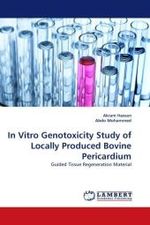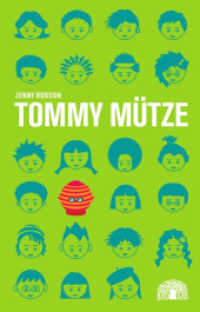- ホーム
- > 洋書
Full Description
The first comprehensive treatment of grammatical number in Welsh - an intriguing, yet relatively neglected area in the study of number phenomena.
Comprises major contributions to the study of grammatical number based on a new corpus collected from Middle Welsh texts and a reassessment of data from Old and Modern Welsh
Approaches number in Welsh from a cross-linguistic perspective, providing data that can be used by Welsh linguists, Celticists, and non-specialized linguists with no previous knowledge of the language
Offers new answers to whether certain noun types are number categories and explores the significance of literary genre to the study of older language stages
Integrates both diachronic and typological perspectives, and is based on the full corpus available here: https://zenodo.org/record/3632585#.XjgzwHtS8uU
Includes new findings on minor numbers, mass nouns and their agreement and the loss of dual number which will prove to be of interest to all linguists
Contents
Abbreviations
Corpora
Grammatical glosses
Acknowledgements
1. Introduction
1.1 The scope and purpose of the book
1.2 Welsh and the Celtic languages
1.3 Sources and methodology
2. Grammatical number in Welsh
2.1 Singular and plural: the main number distinction
2.1.1 Agreement targets
2.2 Initial consonant mutations
3. The 'dual'
3.1 Introduction
3.2 The minor dual in Middle Welsh
3.2.1 Minor duals in the sample and beyond
3.3 The Breton dual
3.3.1 The Breton 'plural-duals', plurals of duals and possible Welsh parallels
3.4 Comparison of the Welsh and Breton duals
3.5 Irish duals and the loss of the dual
3.6 The dual from a cross-linguistic perspective
3.6.1 Semitic languages
3.6.2 Russian
3.6.3 The 'elliptical dual' and 'paral' in Indo-European languages
3.7 Conclusion
4. Morphological collectives and singulatives
4.1 Introduction to collective nouns in Welsh and in Celtic
4.1.1 Lexical collectives (or "corporate nouns")
4.1.2 Morphological collectives in the corpus
4.1.3 Treatment of collective nouns in previous literature
4.2 Is the collective a number category in Welsh?
4.2.1 Agreement and morphological characteristics of the morphological collectives
4.2.2 Perceptual salience
4.2.3 Frequency and markedness
4.2.4 Semantics
4.2.5 Diachronic stability of morphological collectives and acquisition
4.3 Morphosemantic analysis of the suffixes -yn and -en
4.3.1 Singulative
4.3.2 Diminutive
4.3.3 Hypocoristic
4.3.4 Changes in category: adjective → noun and verb → noun
4.3.5 Noun → noun
4.3.6 ‑yn/-en added to loanwords from English (and sometimes other languages)
4.3.7 ‑yn/‑en add a person denotation
4.3.8 Variant suffixes: ‑cyn/‑cen and -an
4.3.9 Suppletion and the rise of new -yn/-en forms
4.3.10 Conclusion: singulatives
4.4 Inflection of morphological collectives and singulatives
4.4.1 Pluralized singulatives
4.4.2 Semantic categories and pluralized collectives
4.4.3 Nouns with marked singular and plural forms
4.5 Alternative for the singulative? Classifier-like constructions in Welsh and in Celtic
4.6 Welsh collective nouns in a cross-linguistic perspective
4.6.1 Dagaare
4.6.2 Germanic languages
4.6.3 Arabic
4.6.4 The semantics of the diminutive cross-linguistically
4.7 Conclusion
5. Mass nouns
5.1 Introduction
5.1.1 Previous scholarship on mass nouns in the Brittonic languages
5.1.2 Tests for distinguishing different noun categories
5.2 Mass nouns in text corpora
5.3 Fieldwork
5.3.1 Results
5.3.2 Discussion
5.4 Theoretical approaches to mass nouns
5.4.1 Mass and count are features of noun phrases, not of nouns
5.4.2 Gradience within the nominal system
5.4.3 The typology of pluralized mass nouns
5.5 Conclusion
6. Number agreement in Welsh: adjectives
6.1 Introduction
6.2 Plural adjectives in the sample: formations, functions and frequencies
6.2.1 Plural adjectives in Breton and Cornish
6.2.2 Order of noun and adjective
6.3 Plural adjectives: inflection and derivation
6.3.1 Plurals of adjectives in -edig
6.3.2 Substantival plural adjectives in -(i)aid
6.4 Genre, register and language: plural adjectives as a case study
6.4.1 Plural adjectives in the Brut y Brenhinedd translations
6.4.2 Plural adjectives in poetry
6.5 Some Modern Welsh developments
6.6 Conclusion
7. Number agreement in Welsh: numeral phrases
7.1. Introduction
7.2 Nouns with a numerative in Middle (and Old) Welsh
7.2.1. Time expressions with numerals: blwyddyn 'year' and dydd 'day'
7.3 Numeral phrases in Middle Breton and Middle Cornish
7.4 Numeral phrases in Irish
7.5 Animacy and frequency
7.6 Conclusion
8. Conclusion
List of textual sources
References
Index







